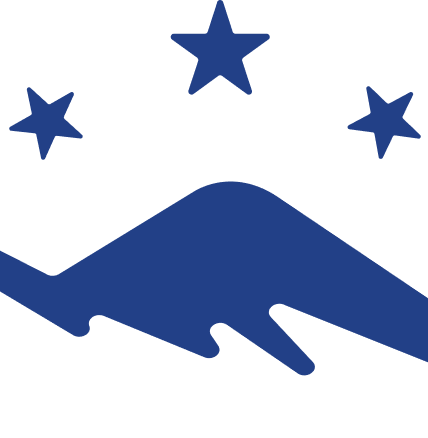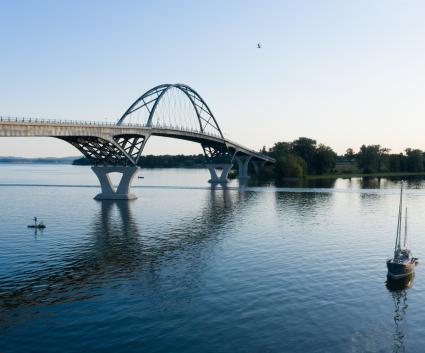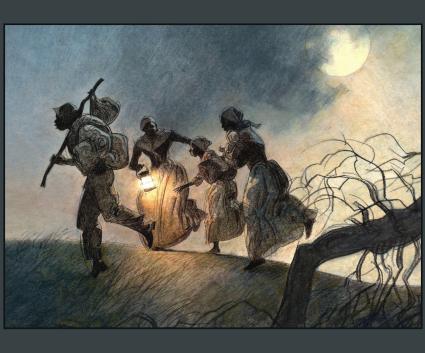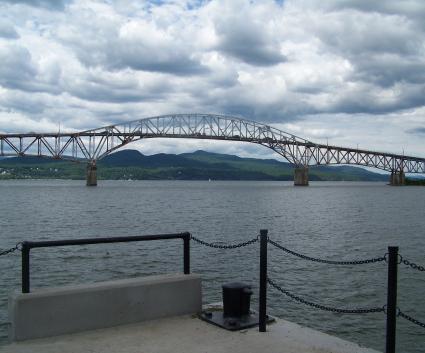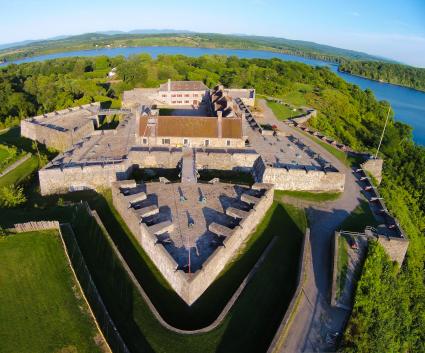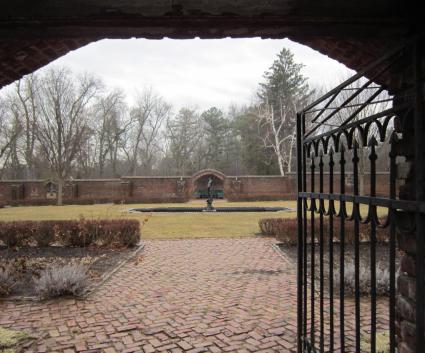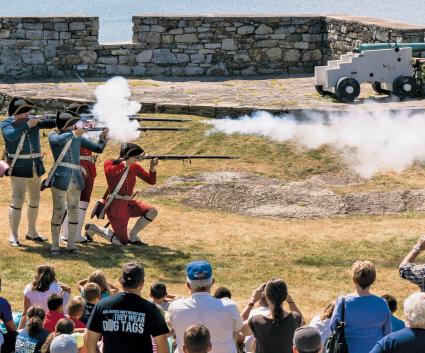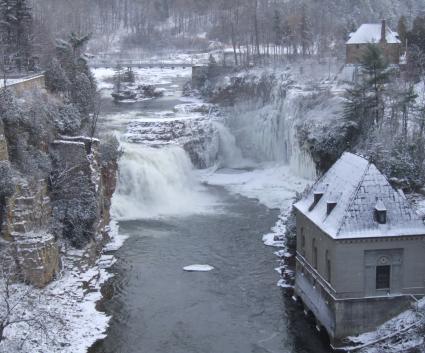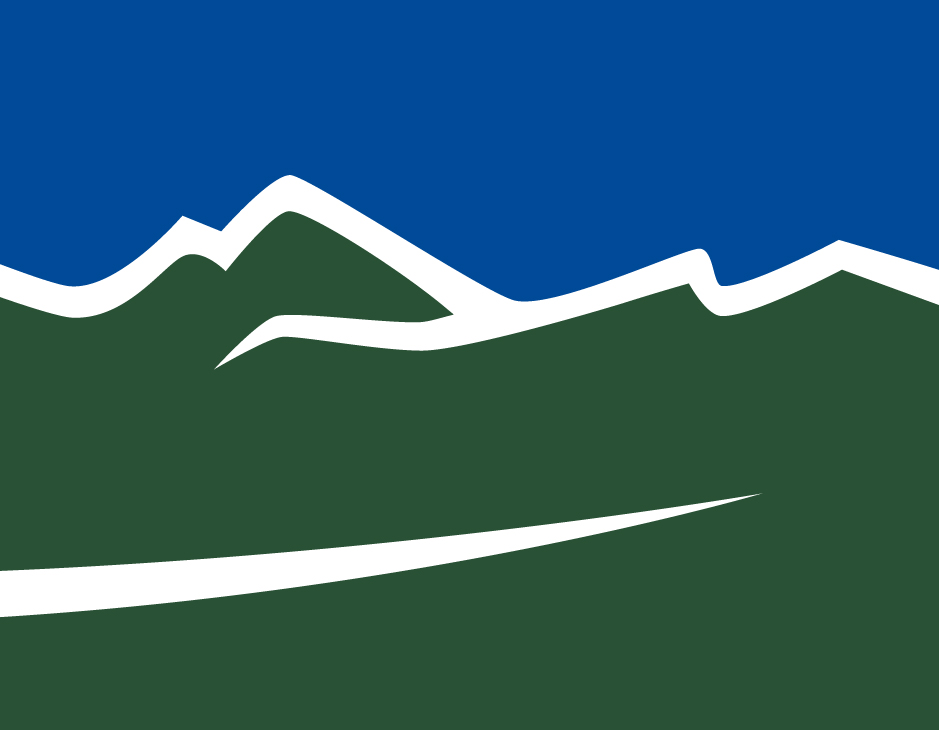Ticonderoga, N.Y. — New York state tourism officials have announced their intention to wage a civil war with the state of Vermont over their currently shared interest in Lake Champlain.
New York and Vermont possess a number of common attributes that attract visitors, including maple production, skiing, hiking, history, paddling, spectacular landscapes, cows, and recreation programs such as Lake Champlain Bikeways. For centuries, New York and Vermont have also equally shared Lake Champlain, as the border between the states runs directly down the middle of the lake.
A recent study by the tourism promotion entity that works under the auspices of Empire State Development with a special focus on Canadian travelers, J’Adore New York (JANY) has shed light on a significant and unfair advantage for the Green Mountain State. The study highlighted a notable bias favoring Vermont over New York in search engine results for Lake Champlain searches.
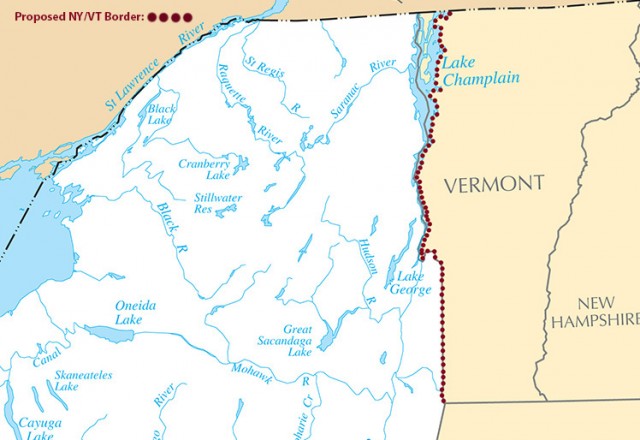
“More than 90 percent of travel research is conducted online, and this advantage could have a huge negative economic impact for New York,” said Gavin Landwet, director of JANY. “We had emergency meetings regarding this dire situation, and during tense discussions and strategic asset analysis, we realized that the solution is actually simple: We already have forts; why don’t we use them?”
Lake Champlain has a long and significant history. In 1609, Samuel de Champlain discovered and named the lake that Native Americans had lived in, on and around for thousands of years. Later, the lake represented an important strategic waterway during the French and Indian War, the American Revolution and the War of 1812.
“All of these conflicts were fought specifically for control of Lake Champlain,” Landwet said at the press conference announcing the war. “We think the time has come for us to implement some of the strategies that worked in the past, and we have the tools at our disposal to do just that.
"We will concede that, in the minds of the traveling public, Vermont is better associated with maple products, and will even concede that they enjoy a larger share of the Boston ski market,” said Landwet. “But we think New York has a legitimate claim to the country’s sixth largest lake, and we’re willing to fight for it by reactivating our existing fortifications.”
In a strategy outlined by JANY representatives, the New York Forts St. Frederic and His Majesty’s Fort at Crown Point, and Fort Ticonderoga will be armed with retrofitted weapons appropriate for the upcoming battle. Valcour Island in the northern part of the lake will be used for supply storage.
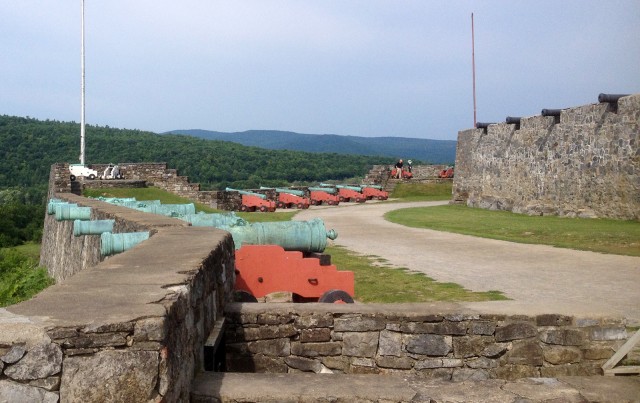
Landwet defined JANY’s measures of success in the conflict as follows:
1. Vermont tourism will remove any mention of Lake Champlain from their digital marketing materials, which would assist in New York’s associated Google rankings.
2. At the end of this conflict, the border between New York and Vermont will no longer run down the middle of Lake Champlain. The eastern border of Lake Champlain will be moved to the western shore of Vermont, so that the lake is entirely located within New York state.
“What we are proposing is not a typical war, but a Very Civil War for control of Lake Champlain,” added Landwet as his staff distributed printed handouts with what he termed a list of “rubber bullet points” to outline New York’s objectives in entering the conflict.
Rubber Bullet Points:
• New York has always promoted Lake Champlain as part of its tourism destination infrastructure, and the border along the lake has long been referred to as New York’s Adirondack Coast of Lake Champlain.
• On the other axis, Vermont tourism promotes the state as having three distinct regions — north, central and southern — and makes no mention of a western region or reference to the lake in its visitor materials.
• Champ, the Lake Champlain monster, lives nearest the western shore of the lake, where most of those who anticipate sightings conduct their searches.
• Lake Champlain Bikeways, a cycling route that circumnavigates the entirety of Lake Champlain, will not be affected by the border change.
• The shared New York/Vermont fishing license program will remain in effect, even when New York attains full ownership of the lake.
• Cannons at Fort Ticonderoga will be retrofitted as long-range water cannons.
• The ammunition used (water) appropriately represents the eventual spoils of the war.
• Although visitors will be welcomed at Fort Ticonderoga during the skirmish, the cannons will be operated solely by fully authentic Languedoc soldiers of the French army, who will be reenacting their engagement in a global war for the empire on Lake Champlain in 1756 for the entire 2015 season.
• Visitors are also welcome to watch from the fort ruins at the Crown Point State Historic Site, the point at which the waterway narrowed enough for someone to build a bridge to Historic Chimney Point in Vermont.
• An advance warning and recommendation to Vermont residents and livestock to don protective eyewear and heavy rain gear will be issued.
JANY representatives noted that they assumed this media exposure would set into motion an appropriate response in Vermont, and that Mount Independence, a National Historic Landmark located in Orwell, Vermont, would be a logical point from which to launch their counterattack. Mount Independence is one of the largest and most well-preserved Revolutionary War archaeological sites in America.
Fort Ticonderoga President Beth Dale is working with the state agency to complete the artillery modifications. “We recognize the importance of defining Lake Champlain’s geographic identity. Though visitors from throughout the world do recognize Fort Ticonderoga as being America’s Fort, a historic site at which they can immerse themselves in living history, they don’t know who owns Lake Champlain,” said Dale. “Now they can be part of living history in the making!”
When asked whether negotiations could be possible to avoid the Very Civil War, Landwet was cautious. “Our strategy to use water to win rights to a body of water is technically fluid in nature, but we stand solidly behind our demands,” he said. “If Vermont wants to avoid being drenched, they have only to move their border and change their marketing. After all, we want to be civil.”
The timeline for the conflict is dependent upon cannon retrofitting and spring ice melt. “Once we’ve determined an opening day for this event, we’re optimistic that Governor Cuomo can be on hand to throw out the first ceremonial water balloon on behalf of New York,” added Landwet. Vermont Governor Peter Shumlin was not contacted in time for a statement, and the fact that Lake Champlain also flows into the Canadian Province of Quebec was not addressed.*
For more information about half of the historic waterway along New York’s Adirondack Coast of Lake Champlain, visit lakechamplainregion.com.
*The preceding story is fabricated in celebration of April Fools day, popular for the commission of good-humored practical jokes of varying sophistication.

